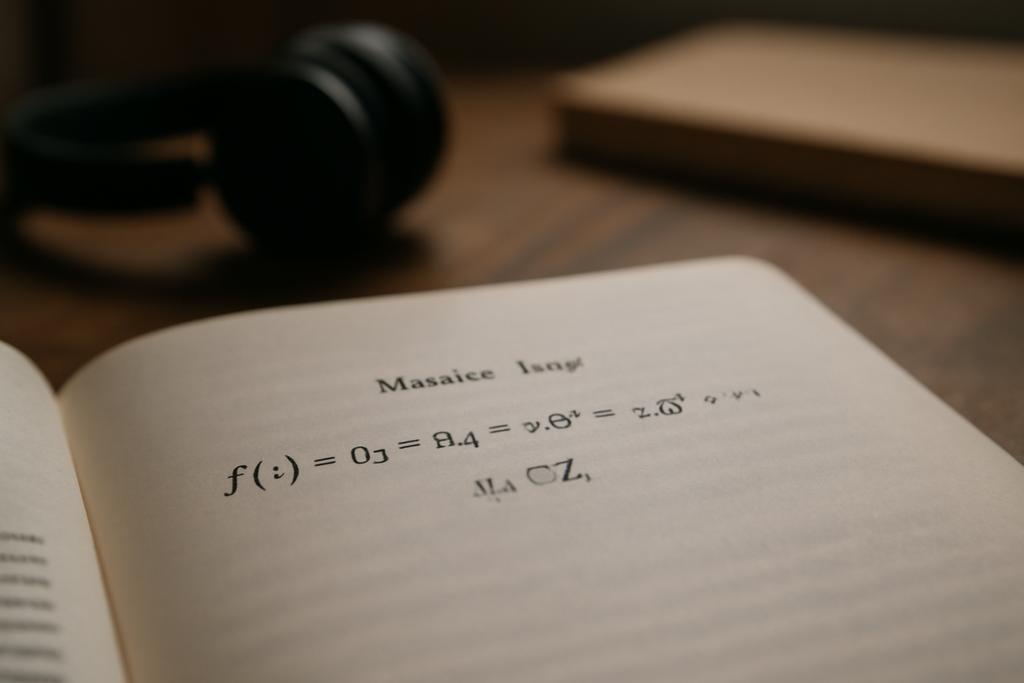Imagine a mathematical object, a modular form, whose coefficients are like the echoes of a hidden musical score. These coefficients, integers representing quantities from partitions to quadratic forms, are crucial to understanding the form’s deep mathematical structure. But what if, instead of carefully calculating each coefficient, we could establish that a modular form’s coefficients are all positive by checking only a finite number of them? This is precisely the fascinating problem tackled by Paul Jenkins and Jeremy Rouse in their recent paper, “Modular Forms with Only Nonnegative Coefficients.” Their work, a testament to the intricate beauty and unexpected simplicity of advanced mathematics, unveils a surprising answer: we need only check a relatively small initial segment of the form’s coefficients to determine their global positivity.
The Echo of Nonnegativity
Modular forms are mathematical powerhouses, appearing unexpectedly in diverse areas of number theory, from counting partitions of integers (how many ways can we express a number as a sum of other numbers) to representing integers as sums of squares. Their coefficients, arranged as an infinite sequence, often encode deep arithmetic information. A special class of modular forms boasts entirely nonnegative coefficients, meaning each term in the sequence is zero or positive. This nonnegativity isn’t merely a pleasant quirk; it reflects a profound underlying mathematical structure. The challenge lies in determining when this positivity holds, rather than laboriously calculating every coefficient to check their nonnegativity.
Jenkins and Rouse’s groundbreaking work introduces the concept of a “nonnegativity Sturm bound.” Think of it as a threshold: if you check a certain number of initial coefficients (the Sturm bound) and find them all nonnegative, then you can be certain that all the subsequent coefficients will also be nonnegative. This elegantly sidesteps the need for infinite calculations. Their paper focuses on modular forms for the special linear group SL2(Z), a fundamental structure in modular form theory.
A Quest for Bounds
The heart of Jenkins and Rouse’s research lies in establishing precise upper and lower bounds for these nonnegativity Sturm bounds. They cleverly connect the problem to the behavior of cusp forms (a special type of modular form), specifically, the point at which their coefficients first change sign. By analyzing Poincaré series (a specific type of modular form constructed to have certain desirable properties), they establish a lower bound on the Sturm bound, showing that at least a certain number of coefficients must be positive before a negative coefficient appears. This lower bound indicates how far one must look to confirm the nonnegativity of the form.
Establishing an upper bound proves more intricate. It involves leveraging sophisticated mathematical machinery, including modularity relations (equations expressing relationships between values of modular forms under specific transformations) and existing bounds on coefficients of cusp forms. The authors’ intricate arguments, drawing from various prior results, finally yield an upper bound that grows roughly as the fourth power of the modular form’s weight, itself a crucial parameter describing the form’s complexity.
The Weight of a Number
The “weight” of a modular form is a crucial parameter related to its symmetries and transformations. A higher weight generally indicates a greater level of complexity, and one might expect a larger number of coefficients to check for nonnegativity. This intuition is partially confirmed by the upper bound discovered by Jenkins and Rouse: the number of coefficients one must check to guarantee nonnegativity does indeed increase with the weight. However, the surprising aspect of their findings lies in the relatively slow growth rate of the upper bound.
The research conducted at the University of Newcastle demonstrates that despite the infinite nature of the coefficient sequences, determining their nonnegativity is a fundamentally finite problem, a remarkable insight that reveals underlying order in a seemingly limitless landscape. The upper bound is significantly smaller than the scale of infinite checks one might intuitively anticipate. The authors’ study elegantly bridges theory and computation: they not only derive theoretical bounds but also meticulously compute the nonnegativity Sturm bound for smaller weights, revealing the remarkable closeness between the lower and upper bounds in these cases. This work exemplifies a beautiful interplay between theoretical analysis and practical computations.
Implications and Future Directions
The implications of Jenkins and Rouse’s findings extend beyond the purely theoretical. Modular forms are deeply intertwined with many important mathematical structures, serving as generating functions that count various arithmetically significant objects. The existence of a relatively small nonnegativity Sturm bound offers a powerful tool for analyzing these objects. By efficiently verifying the positivity of a relatively short initial segment of the modular form’s coefficients, researchers can deduce crucial information about the objects counted by the form, potentially accelerating computations and discoveries in seemingly disparate fields.
Their work also opens promising avenues for future research. While the paper focuses on modular forms of level 1 (meaning a specific type of symmetry), it lays the groundwork for extending these results to modular forms of higher levels. Such generalizations could further expand the applications of these techniques to richer areas of number theory and beyond. The study of modular forms, once perceived as an abstract realm of pure mathematics, is increasingly demonstrating its power to shed light on practical problems, a tribute to the profound interconnectedness of mathematics.
In conclusion, Jenkins and Rouse’s work reveals a surprising and beautiful aspect of modular forms: the seemingly infinite task of verifying nonnegativity is, in fact, finitely checkable. Their discovery, a testament to the power of theoretical analysis and meticulous computation, paves the way for greater efficiency in exploring the rich tapestry of number theory.










